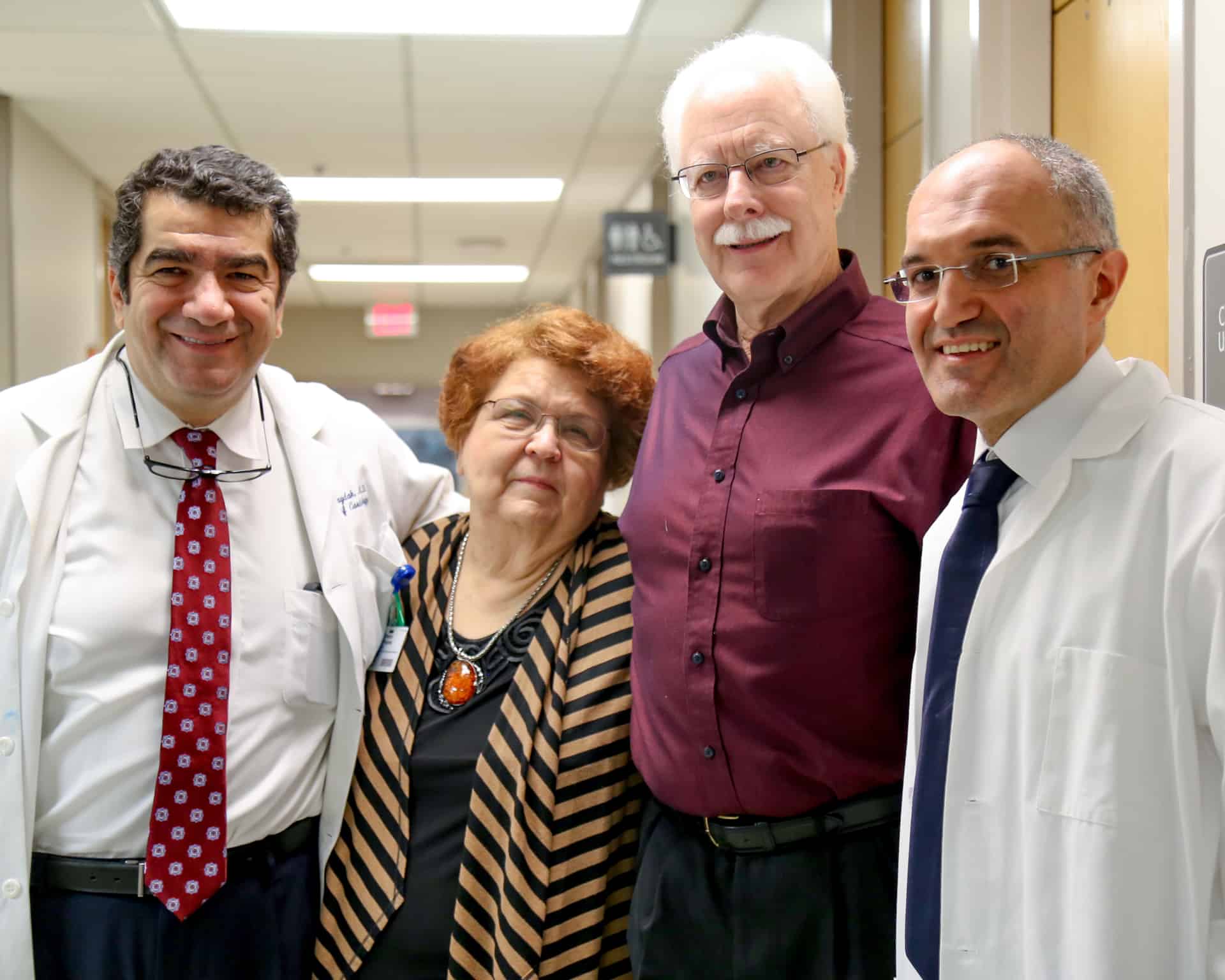Mena Woman with AFib Back to Enjoying Life
| Feb. 3, 2017 | Glenna Love enjoyed spending time in her garden, writing as a member of the writers’ guild and traveling the world.
“We’ve had a great life,” said the 74-year-old from Mena.
Love and her husband of 34 years, Robert Tomlinson, enjoy the memories they have of traveling across the sea to countries all over Europe and Asia. But for the past three years, they haven’t been able to go very far.
“All of a sudden, I got sick,” Love said. “I knew something was wrong but I went undiagnosed for some time.”
Love says the symptoms she experienced caused even small tasks to seem enormous.
“It became so bad, I couldn’t even drive to the grocery store,” Love said. “I couldn’t walk from my car to inside the grocery store.”
Love’s symptoms began in 2013. When she’d experience an episode, she couldn’t breathe. Her heart was racing and felt irregular. When she sought medical attention, Love was told she was having panic attacks triggered by a low heart rate.
At her worst point, Love says she would feel the debilitating discomfort nearly every day and a severe attack could last from 15 minutes to two hours.
“I was miserable. It was hard to breathe or think,” Love said. “I could hear when someone talked to me, but it was very difficult to respond coherently.”
She stopped working in her flower garden and attending her writing class. Traveling was put on hold.
“Basically, my life stopped. You go from day to day – but you can’t really plan anything. I couldn’t plan to have visitors or go see friends. My condition was that bad.”

Hakan Paydak, M.D. examines Glenna Love, in the UAMS Cardiology Clinic. Paydak helped correct her irregular heartbeat.
Love was diagnosed 12 months later with atrial fibrillation, often known as AFib. Atrial fibrillation is an irregular heartbeat or quivering that affects more than 2 million Americans. It can lead to other problems like blood clots, stroke or heart failure.
For patients with AFib, medication is often the first step of treatment. If it doesn’t work, like in Love’s case, the doctor will consider a cardiac ablation, a procedure that will destroy tissue in the heart that signals incorrect electrical signals causing the irregular heartbeat.
Love’s mother had AFib and died from a stroke. Love wanted to make sure she did everything she could to treat her condition. She decided to go to UAMS.
“I called and said, ‘I don’t know who I need to see, but I have AFib.’ The woman on the phone told me, ‘You need to see Dr. Paydak.”’
Hakan Paydak, M.D., is a professor in the UAMS College of Medicine Department of Internal Medicine. He specializes in heart rhythm disorders. Love says her first appointment with him lasted two hours.
“They really took the time to learn everything about my history. They were taking every kind of note. I was interviewed extensively. It was not just a quick in and out.”
Paydak recommended that Love first have an ablation at another hospital, because the lab at UAMS was being upgraded and not available. This particular type is known as pulmonary vein ablation isolation. During the procedure, the doctor inserted a thin tube with an electrode in the groin and guided it through the vein into her heart. The catheter was directed to the location in the heart that caused the arrhythmia.
Love’s AFib did not go away after the pulmonary vein ablation isolation. She was still feeling week and fatigued months later.
“Based off the things she was telling me and her quality of life, I thought we should do a second ablation procedure,” Paydak said.
Paydak worked with his colleague in the UAMS Cardiology Clinic, Waddah Maskoun, M.D., assistant professor in the Department of Internal Medicine.
“I was confident this ablation would help her symptoms and quality of life,” Maskoun said. “There was no question she needed a second procedure.”
This procedure would be much more involved. Maskoun removed the re-connections (applied during her first ablation) between her pulmonary veins and the left atrium. These re-connections, Paydak believed, were the reason for the recurrence. Maskoun then separated the superior vena cava, a large vein in the heart, from the right atrium, one of the heart’s four chambers, to help ensure a regular heartbeat.
“People underestimate what it is like,” Love said. “It’s basically the equivalent to overhauling a jet engine while it’s in flight. Your heart is beating when he does this!”
Love says the difference in her energy level and ability to breathe was like night and day. She can now walk long distances and has been back in her garden and writing classes. She and Tomlinson are hoping to plan a trip soon.
“What they did for me is incredible,” Love said. “These two gentlemen gave me my life back.”
For information on UAMS Cardiac Services, visit https://news.uams.edu/medicalservices/heart/cardiology/.
